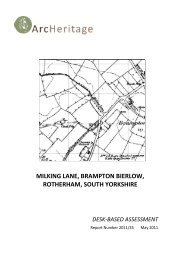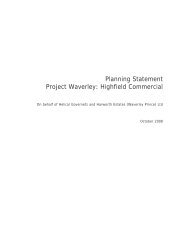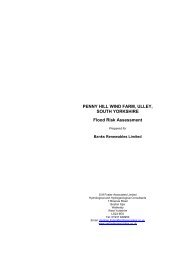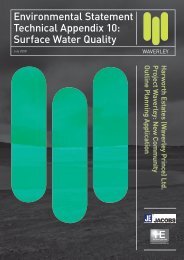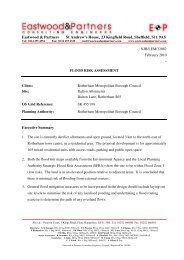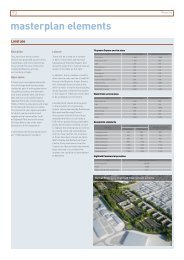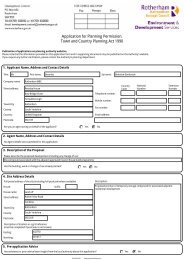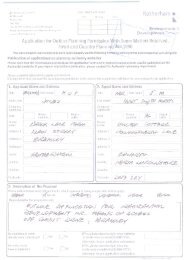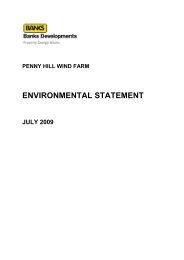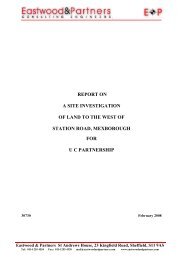environmental statement - Rotherham's Online Application for ...
environmental statement - Rotherham's Online Application for ...
environmental statement - Rotherham's Online Application for ...
You also want an ePaper? Increase the reach of your titles
YUMPU automatically turns print PDFs into web optimized ePapers that Google loves.
study area and were surveyed, these were the northern and southern<br />
branches of Ulley Brook. No otter signs were found during these surveys,<br />
however suitable features such as exposed roots and dead wood <strong>for</strong> holt<br />
locations were recorded. It is probable that otter would use these<br />
watercourses <strong>for</strong> commuting if they were present in the area.<br />
Water Vole Survey<br />
7.34 A number of drainage ditches were identified that were considered<br />
unsuitable <strong>for</strong> water vole due to factors such as lack of water, unsuitable<br />
banks, pollution, stagnation, and being completely overgrown with<br />
vegetation or algal growth. Two watercourses were considered suitable<br />
<strong>for</strong> water vole within the study area and were surveyed. No signs of water<br />
vole were found during these surveys. A small number of holes were<br />
noted at the bottom of the bank on southern branch of Ulley Brook,<br />
however due to an absence of other signs such as latrines and feeding<br />
stations, it was concluded that these were rat holes. This watercourse<br />
does, however provide suitable habitat along some of its length, and due<br />
to the presence of water vole in the wider area, the future colonisation of<br />
this watercourse cannot be ruled out.<br />
7.35 The second watercourse surveyed was the northern branch of the Ulley<br />
Brook (north of the site boundary). The upstream section where it flows<br />
west from the M1 culvert was considered sub-optimal <strong>for</strong> water vole as the<br />
banks were scrubby or supported semi-mature trees with no grassy<br />
vegetation. The downstream section was considered more suitable <strong>for</strong><br />
water vole as the banks become shallower and less wooded, however<br />
they are continuously lined with hawthorn and elder which overhang and<br />
shade the watercourse.<br />
White Clawed Crayfish Survey<br />
7.36 A number of drainage ditches on the site were considered unsuitable <strong>for</strong><br />
white-clawed crayfish due to factors such as lack of water, pollution and<br />
complete algal cover, stagnation, lack of suitable refuges, and being<br />
completely overgrown with vegetation. The northern and southern<br />
branches of the Ulley Brook were considered suitable <strong>for</strong> white-clawed<br />
crayfish and were surveyed. No white-clawed crayfish or signs of whiteclawed<br />
crayfish were found during these surveys. Suitable features such<br />
as heterogenous flow pattern, debris dams and tree roots were recorded.<br />
However, the substrate was silty and in-channel refuges were limited,<br />
which is unfavourable habitat <strong>for</strong> white-clawed crayfish. No burrows were<br />
identified and it is considered that white-clawed crayfish are not present in<br />
these watercourses.<br />
Great Crested Newt Survey<br />
7.37 At the time of survey the pond was completely overgrown with vegetation<br />
including soft rush, great willowherb, watercress and grasses, which have<br />
grown vigorously due to the influx of nutrients from agricultural drainage.<br />
177<br />
Penny Hill Wind Farm<br />
Environmental Statement



